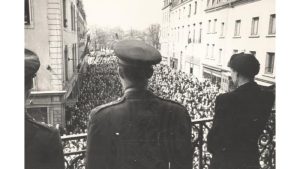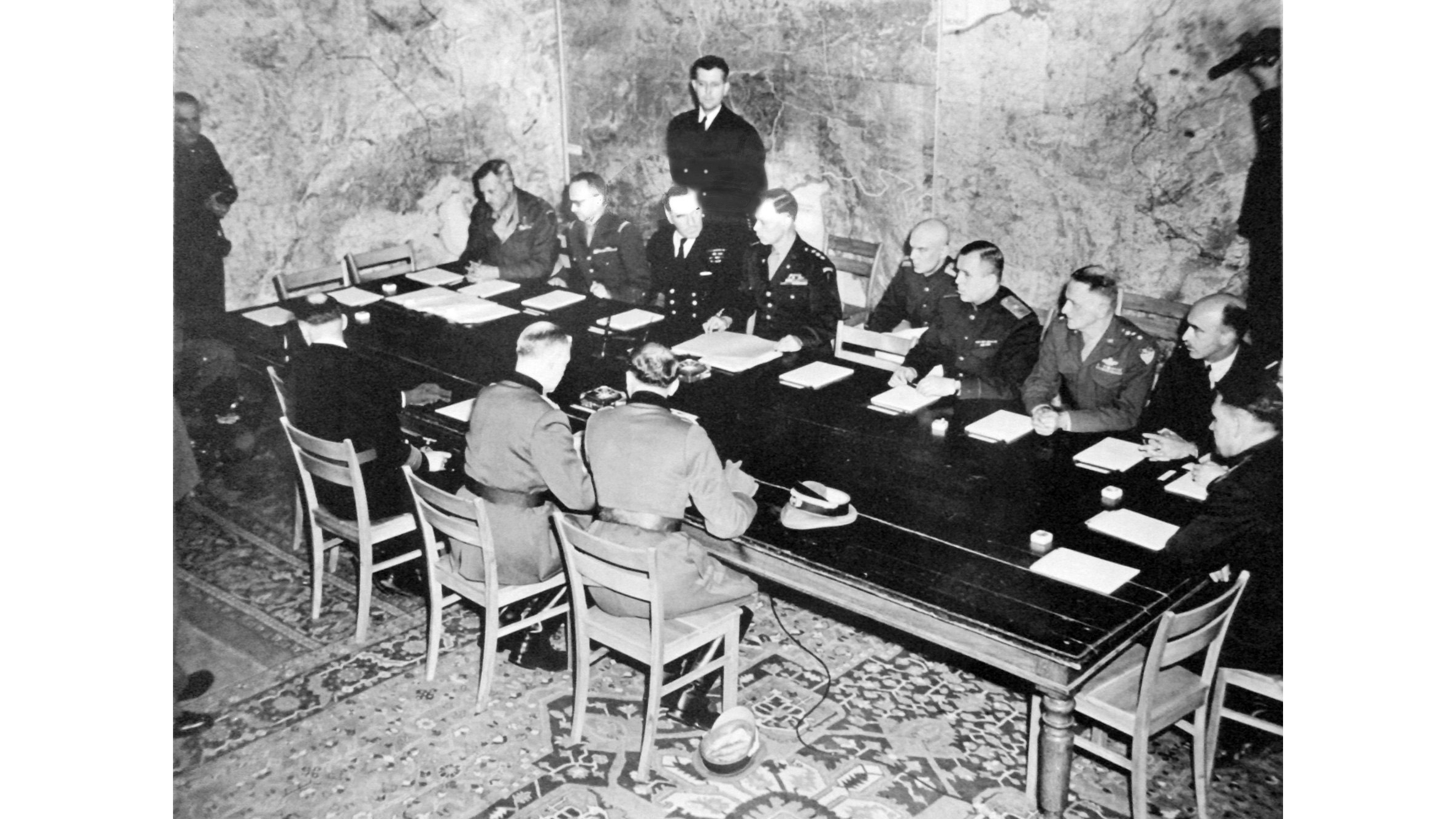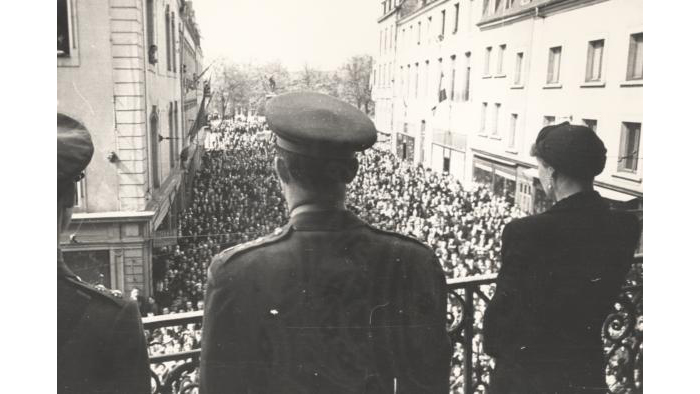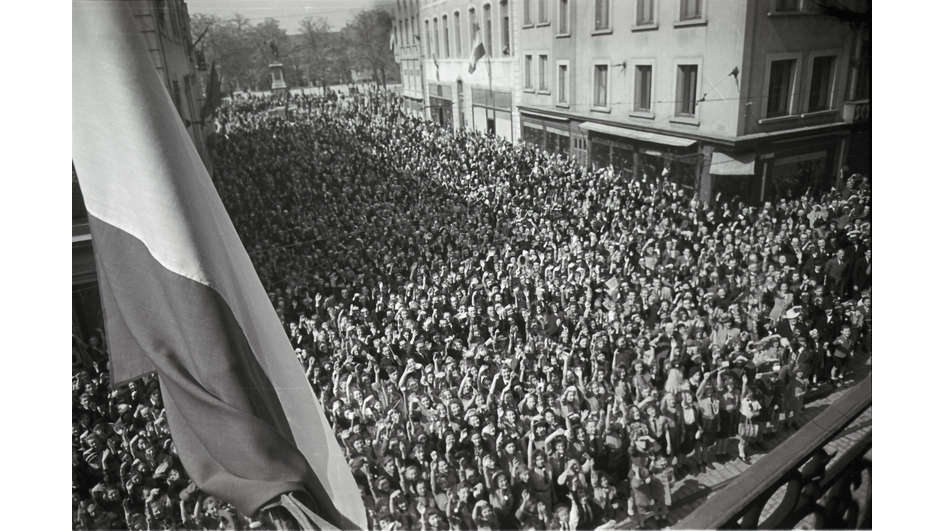The C²DH created online exhibition Luxemb(o)urg during World War II shows how Luxembourgers had lived the War period and how they entered the post-war period.
With the surrender of the German army on 8 May 1945, the Second World War ended for Europe. This Victory-in-Europe day initiated new manifestations of joy in Luxembourg – like the return of grand-duchess Chalotte three weeks before. The country’s Occupation and de facto-Annexation by Nazi Germany had been a period of huge tensions within the Luxembourgish society. The country was now in the process of what historians call the “sortie de guerre”, the transition between war and peace.
An online exhibition rooted in historical research
Launched in December 2024, the online exhibition Luxemb(o)urg during World War II was conceived and realised by a team of the C²DH Research group ‘Contemporary History of Luxembourg’ between 2022 and 2024. The convention with the ministry of State, signed in 2021, was the result of the success of a previous online exhibition devoted to the First World War in Luxembourg, which had been launched in 2018.
Between ‘Luxembourg’ and ‘Luxemburg’, the population faced the Germanisation efforts of the Nazi regime. The period of annexation reveals a torn society whose first concern was to cope with everyday life in an exceptional situation. The online exhibition contains war experiences of all those whose fate was linked to Luxembourg in the period of 1940-1945. It covers experiences of persecution, opposition and resistance, acts of collaboration, stances of adaptation and resignation as well as “agreements”. The main objective is to show the complex decisions faced by individuals and collectives and how their decisions developed during the four years of German rule.
Thanks to its various forms of presentation and its multilingualism, the online exhibition is aimed at a wide audience. The exhibition makes it possible to approach the experiences of Luxembourgers from different perspectives by drawing on a rich and often overlooked collection of documents. In collaboration with cultural institutions such as the National Archives, the Archives of the City of Luxembourg, the CNA, the National Library, and the National Centre for Literature, as well as museums and private collectors, we have succeeded in showcasing photographs, films, objects and documents from the period of 1940-1945 that have never or only rarely been shown before.
The future of digital memory
A key consideration in the visual design was moving beyond the black-and-white aesthetic typically found in war exhibitions. The aim was to remind visitors that the sky could also be blue in times of war. In the end, a restrained visual identity was created, featuring shades of grey and green, along with the incorporation of blue from the Luxembourgish national flag.
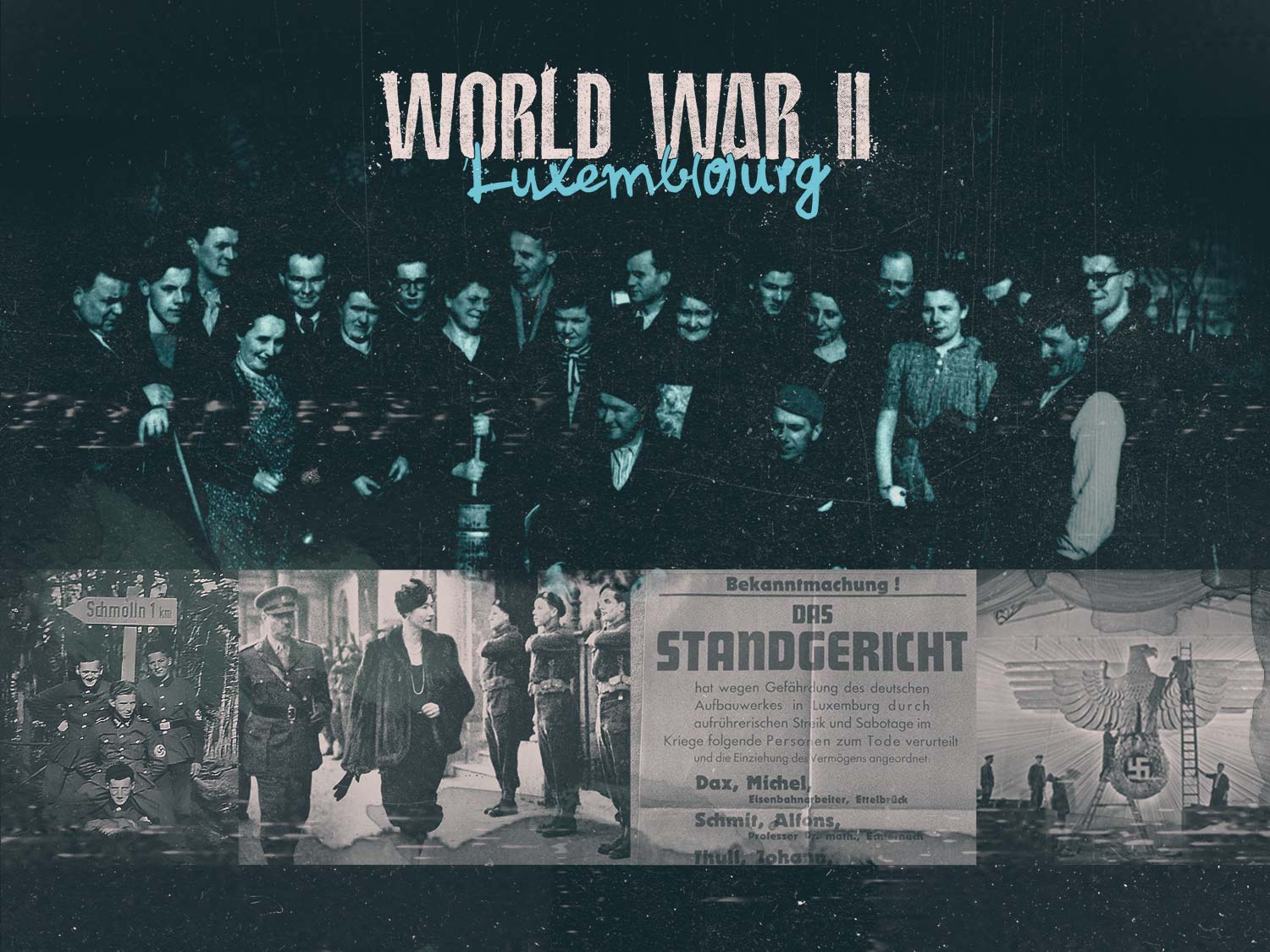
A total of 33 video clips create a historical panorama of known and unknown places. They consist of testimonies, interviews with historians, archive films and two animated cartoons. At this level of the exhibition, we also wanted to enable travel between past and present. The user immerses themselves in historical locations starting from a contemporary map. With each clip, they discover what the place looks like today and how it looked during the war. Careful thought was also given to the sound design and musical score. The ambient sounds were taken from audio recordings captured on location during filming.
The catalogue contains around sixty entries, which describe various aspects of the annexation of Luxembourg. These texts are written in a concise yet comprehensive way. The authors, all experts in their field, had a free hand in writing their contributions. All entries are accompanied by documents that connect microhistory with the broader historical context.
Curious users who want to delve deeper into a topic can slip into the role of a Resistance fighter in 1944 and explore the entire archive collection of the exhibition. Research can be even further expanded by exploring the bibliographical references provided. Finally, the comparison of various maps of Luxembourg City from 1940-1944 with the current city map shows how the annexation changed the face of the city in the short and long term.
The online exhibition also serves as a platform for other outreach projects that have emerged from C²DH research, such as the Mémorial Digital de la Shoah or the collections of the Warlux project.
Since the C²DH was founded, online exhibitions have become an important part of the work in the field of digital public history. The questions of the extent to which research findings can be disseminated to society, how the exchange between research and society can be improved and how we can encourage the public to reflect on history remain more topical than ever.
